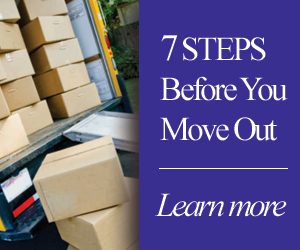Selling, splitting, and dividing business assets can make divorce trickier
When a couple goes through a divorce, assets and liabilities are split through a process called Equitable Distribution. Essentially, a court will classify property as either marital or separate, place a value on the property, and then distribute the property between the spouses.
Certainly, some types of property are easier to distribute than others. For instance, typically both spouses will have a vehicle, and each spouse will keep their respective vehicles. Other types of property may be more difficult to distribute – for example the marital residence. To distribute the residence, most of the time the spouses will agree to sell the house and split the proceeds. However, sometimes one party will want to stay in the house, and they will essentially have to buy the other spouse out.
Other types of property can be even more difficult to distribute. For instance, what if a spouse has an ownership interest in a business? How would you go about “splitting” this interest? How do you value the business to discern just how much it’s worth? As you can see distributing this type of asset is more difficult than distributing the vehicles in the above example. There are three methods most couples use when distributing a business interest.
Buy Out
The most common method used, is the scenario where one spouse essentially buys the other spouse’s interest in the business. The following example will illustrate how the buy out works.
John and Mary are both dentists, and they jointly own and run a dental practice. They agree after a company valuation that the value of the practice is $500,000. Mary plans to move to Virginia and start working for another dental practice once the divorce is finalized, and John intends on continuing to work at the couple’s dental practice. In order for Mary to get her half of the value of the practice, John will owe her $250,000.
The buy out only works if the buying spouse has enough cash to satisfy the selling spouse. Typically in a buy-out situation the buying spouse will just transfer the lump sum owed to the selling spouse. Sometimes, however, spouses may agree to structure the buy out to take place over time. In the example above, Mary may agree to let John give her $100,000 now, and $150,000 next year. A structured buy out is preferable to a buying spouse when she owes the selling spouse a large amount of money to satisfy the selling spouse’s interest.
Keep in mind that the buying spouse doesn’t necessarily have to have enough cash on hand to effectuate the buyout if there are other liquid assets. So in our example, if John didn’t have $250,000 on hand to give Mary, he could cash in an IRA or 401K to gain access to more money. If John were to cash in one his retirement accounts, he would want to consider the tax implications of early withdrawal. John might also consider offering to let Mary have the marital residence or another asset of comparable value, in return for him keeping the dental practice. So even if he didn’t have $250,000 cash to give her right away, he could consider liquidating other assets or in order to complete the buy out. The buying spouse could also consider offering another asset, if he didn’t have access to enough cash to give the selling spouse.
Co-Ownership
Another way to distribute a business asset is to not distribute it, and continue to jointly own the business after the divorce. For instance, using our above example, if John and Mary were amicable, and both wanted to keep running the dental practice, they could continue to co-own and run the practice even though they were separated or divorced.
Another version of co-ownership might exist where one spouse continues to run the business while the other agrees to accept payments from future business proceeds to satisfy her share of the marital assets. This can be risky, however, if the business ceases to turn a profit.
Co-ownership is not a very popular way to distribute a business asset in divorce because many couples are not able to continue to have a productive working relationship after the dissolution of their marriage. It only works in situations where the parties are amicable and can continue to trust and respect each other.
Sell the Business
If neither of the two methods listed above are viable ways to distribute the business interest, the best way to make sure each spouse is compensated for his or her interest in a business is to sell the business and divide the proceeds. This is a common way to distribute other types of property as well. For instance, frequently spouses will agree to sell the marital home and split the proceeds.
This option does present some difficulties, however. If the business is obscure or not very profitable it may take a significant amount of time to find a buyer. Also, it may not be the best option if the spouses disagree over the value of the business. Finally, if one spouse wants to continue to contribute to the business, most likely he or she will be opposed to selling it.
Another issue with selling the business is that market fluctuations can have a serious impact on the value of the business. Perhaps a business may not be valued very high during an economic downturn, but would be worth a considerably greater amount in a better economic climate. Opting to sell might not provide the spouses with the greatest payout, it may be wise to continue to co-own and run the business until its marketability improved.
When it comes to distributing business interest incident to divorce, the three methods discussed herein are the three most common ways for the spouses to take a fair distribution. There are pros and cons to each method that the spouses should consider before selecting a method of distribution.
Worried about how divorce will affect your business? Contact us






